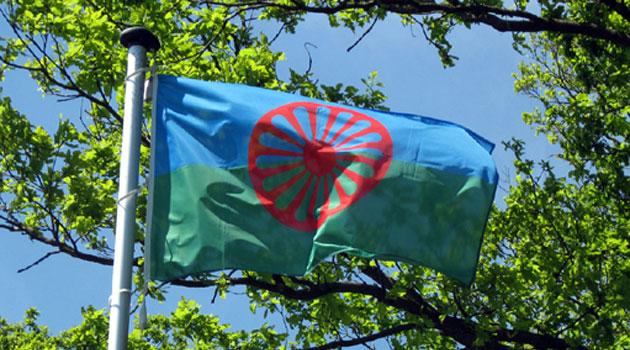50th anniversary of the international movement of Romani people celebrated worldwide

Today, Thursday 8 April 2021, Romani people worldwide are celebrating International Romani Day. This is the 50th anniversary of the historic, important, first-ever World Roma Congress held in Orpington near London in 1971 in the United Kingdom.
That Congress laid the foundations for the international collaboration of Romani people and their movement attained its international, sociopolitical dimension as a result. Romani people annually commemorate their common culture, language and origin, their shared collaborations and unity, and above all their Romipen (“Romani-ness”).
Just like last year, celebrations and commemorations of this important day are being held online. The first historic congress was held thanks to the initiative of Slobodan Berberski, Ján Cibula, Juan de Dios Ramirez Heredia, Grattan Puxon, and Vanko Rouda.
Interpretation at the meeting was provided by Donald Kerrick and Mateo Maximoff. There were about 30 official participants, but many more Romani people than that also attended the congress, above all those who were visiting the festival associated with it in nearby Hampstead.
The participants from 14 countries and observers from another six countries agreed on the form of the Roma flag and the international Roma anthem. One of the main outputs of the congress was the rejection of the term “Gypsy/Cikán” and adoption of the autonym “Roma”.
That congress was also attended by four members of the Union of Gypsies-Roma (Svaz Cikánů-Romů) from Czechoslovakia. In the year 1977, in order to more smoothly organize the Second World Roma Congress, the first international Romani organization was established, the International Romani Union (IRU).
The second congress was held in 1978 in Geneva, Switzerland. In 1979 the IRU registered as an NGO with the United Nations.
8 April was not recognized as an international holiday until much later, in 1990, at the Fourth World Roma Congress in Warsaw, Poland. In the Czech Republic, International Romani Day was not spoken of until the second half of the 1990s; the very first celebrations of International Romani Day in the Czech Republic were held in the year 2001 by Athinganoi, the association of Romani university students.
THE ROMANI FLAG

The co-creator of the flag was the late Dr. W. R. Rischi, a linguist and Romani Studies scholar from Chandigar, India (who later established a Center for Romani Studies there), who passed away on 1 December 2002. The flag is comprised of two horizontal stripes, the lower green one symbolizing the Romani people’s connectedness to the natural world and the upper blue one symbolizing the heavens, or spirituality, philosophy, etc.
The wheel in the center, which overlaps both bands of color, symbolizes life on the road and pilgrimage, and is also based on the ancient Indian wheel of fate. Originally it had 16 spokes, the bright red color of which corresponds to the first chakra, the element of the earth.
THE ROMANI ANTHEM
The international Romani anthem, “Gelem, gelem“, uses a traditional Romani tune for which the lyrics were written by the Romani musician and poltician Jarko Jovanović of Belgrade, who has long lived in Paris. Czech and Slovak Romani people also have their own anthem, “Čhajori romani“, which was composed in the Auschwitz death camp and handed down by Holocaust survivors; the international anthem was not adopted by Romani people in the Czech Republic and Slovakia until the 1990s.
